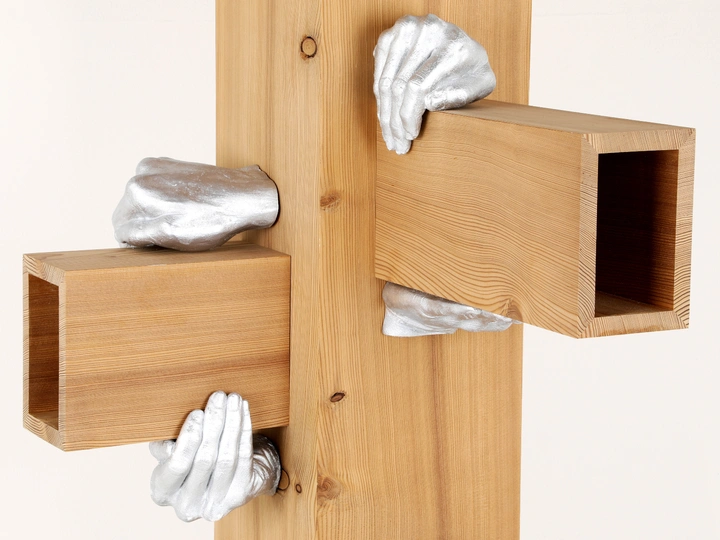Constructive Cultures

Nicholas Morris
Nicholas Morris and Eike Maas have been investigating architecture together since 2009.
Nicholas is an artist, artisan, and architect living and working in Grenoble, France. He obtained his BFA in sculpture with a minor in visual studies at the California College of the Arts in San Francisco and his diplôme d’État from the École Nationale Supérieure d’Architecture de Grenoble. He has several years of experience with the theory and practice of socially engaged art and his works often take the form of pedagogical and building collaborations. He has organized projects in the U.S., U.K., India and France and has been the recipient of the Wornick Scholarship for excellence in woodworking and the IMPACT social entrepreneurship award from the Center for Art and Public Life in Oakland, California.
Eike is a second-generation woodworker, architect, and ceramicist living in New Haven, USA. Eike was given his first chisel and block plane in 1995 at four years old, and later acquired a Bachelor of Architecture degree from Thomas Jefferson University in Philadelphia in 2014. He has worked for esteemed architectural and design-build practices throughout the U.S., including Perkins & Will, Gensler, and Marmol Radziner. Eike has a breadth of experience from designing billion-dollar urban mixed-use high rise towers for notorious developers to building in-situ kilns to fire wild clay, and has worked in jurisdictions as varied as Istanbul, New York City, Los Angeles, and Death Valley. Eike has also worked with designers to design and fabricate custom furniture prototypes in wood, and has helped design and build the restoration of an historic farmhouse on a secluded date palm oasis in the Mojave Desert of California. Eike is a dual citizen of the USA and Germany.
Nicholas and Eike view the built environment as the confluence of material consciousness, construction technique, and theoretical doctrine, and view the architect as the cultural actor for all three of these facets.
Morris & Maas propose to develop a cultural framework for analyzing and creating sustainable placemaking, enacted through theoretical discourse, participatory exhibitions, and sculptural material interventions. We call this Constructive Cultures.
Constructive Cultures enables us to engage with the built environment and its creators, revealing the relationships between construction techniques, materiality, and underlying discourse. The innovation of the Constructive Cultures concept is its perspective that historical social configurations are modifiable. Architecture can be changed by modifying the culture that orders it. Culture is as much a product of architecture as vice versa.
In our experience as architects and builders, we have found that the cultural paradigm of contemporary construction is untenable. Globally, shelter falls increasingly under a system of real estate owned by the wealthy used to exploit the poor. This shelter is built using materials and techniques that rely on labor specialization and material complexity under a model of false scarcity, inaccessibility, and material extractivism. It has led to the degradation of the environment and the human spirit. This dominant culture of construction is a reflection of unsustainable systems, and it must change. This requires the reconsideration of both how we build and why we build.
We plan to develop proposals for new cultural frameworks and explore how to reinvent the relationships between the materiality of buildings, the labor systems of construction, and the doctrines of its actors.
We believe that we can provoke this change through interventions into public space built interactively, using materials and techniques that are founded on research, fostering instinctual needs for shelter and community. Architecture can be practiced through the construction of customs, doctrines and social forms that can then lead to novel built environments. We can design Constructive Cultures for the future.